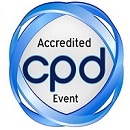
Gourab Samanta
Odissa University of Agriculture and Technology, India
Title: Safe food production from poultry, Japanese quail and pigs with antibiotic alternative
Biography
Biography: Gourab Samanta
Abstract
In view of antibiotic free meat production from broiler chicks, Japanese quail and pigs, antibiotic growth promoter was compared to different organic acid salts (OAS) with or without Yeast Mann Oligosaccharide (MOS). In the first experiment, day old chicks of Japanese Quail (n-250) were randomly assigned into seven dietary treatments: Control (T0) chicks with a standard basal diet; T1-basal diet with antibiotic (Bacitracin Methyl Disalisylate-BMD) at 0.5 gKg-1; T2-diet with sodium butyrate at 5 gKg-1; diet with MOS 1 gKg-1; diet with ammonium formate at 1 gKg-1, calcium propionate 1 g Kg-1 and sodium butyrate 5 gKg-1; diet with sodium butyrate 5 gKg-1 and MOS at 1 gKg-1; Ammonium formate at 1 gKg-1, calcium propionate at 1 gKg-1, sodium butyrate at 5 gKg-1 and MOS at 1 gKg-1 of the diet. Six weeks feeding trial indicated supplementation of organic acids significantly (P<0.05) increased live weight gain with superior feed conversion. Organic acids also reduces the bacterial load in gut than antibiotic. In the second experiment, broiler chicks were randomly distributed in six groups having four replicates of ten birds in each. The experimental groups were: Control (T0)-provided with standard basal diet; T1-ammonium formate (0.1%) calcium propionate (0.15%), and MOS (0.2%); T2 ammonium formate (0.15%) and calcium propionate (0.15%); T3-ammonium formate (0.1%) calcium propionate (0.1%), calcium lactate (0.1%) and activated charcoal (0.1%); T4-with BMD (0.05%). Six weeks growth study showed that significantly higher (P<0.05) body weight gain and improved feed conversion were observed in the group (T1), supplemented with OAS and MOS combination than antibiotic (T4) and control (T0) groups respectively. The pathogenic organism count in the gut was reduced with organic acids compared to antibiotic supplementation. In the third experiment, Ghungroo pigs, a local variety were divided in to four experimental groups. Group T0 (control) was provided with standard pig starter and grower diet; group T1-diet with calcium lactate (0.1%), calcium propionate (0.1%) and ammonium formate (0.1%), group T2-with organic acids and Mann oligosaccharide (0.1%) and group T3-with antibiotic supplement aurofac 14 (0.05%) respectively. 90 days feeding trial indicated that there was significantly (P<0.05) superior weight grain and feed efficiency compared to control (T0) and antibiotic supplementation. The microbiological study in feeds and faeces indicated that microbial count like E.coli, coliform and clostridium were significantly (p<0.05) lower with organic acids. From the present findings, it may be inferred that organic acids and mannoligosaccharide may be an alternative of antibiotic for safe food production and controlling of pathogenic microorganism in poultry, Japanese quail and pig production.

